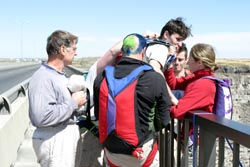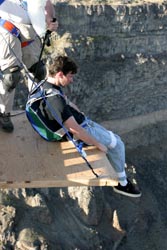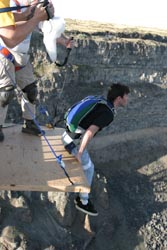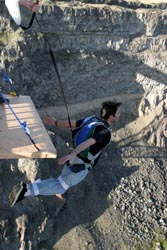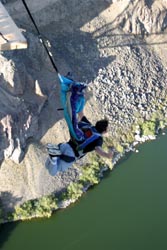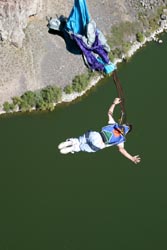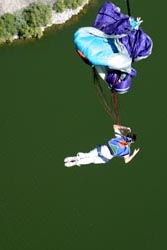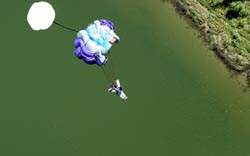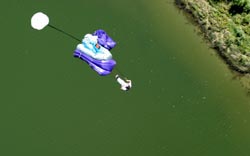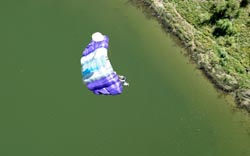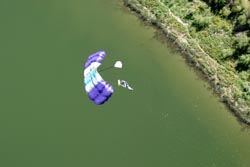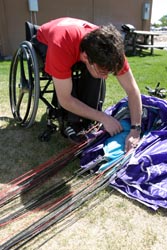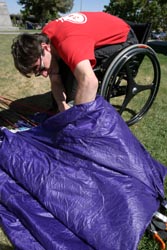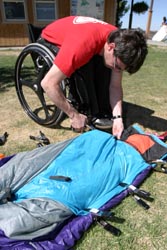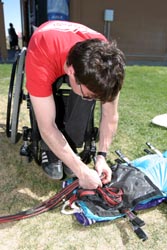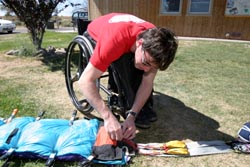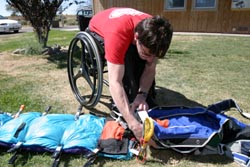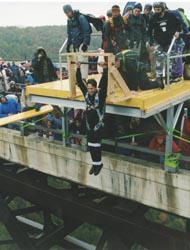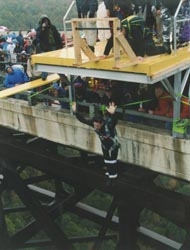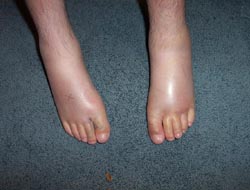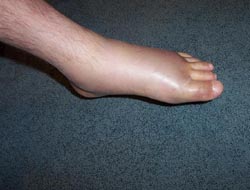4th and 5th Jumps:
After talking with Jason from Vertical Visions, the person who organized Bridge Day 2003, I decided I would go to Idaho for Memorial Day weekend in 2004. Jason gave me the name of a BASE jumper, Tom, who lives in Idaho just a few miles from the local 486' tall Bridge. I got in touch with Tom and told him I'd like to make a solo jump from the bridge that weekend and asked if he was willing to give me a hand. I had recently bought my own BASE rig (thank god I got rid of that pink) and I started to practice packing it myself. When I got to Idaho I met with Tom and we worked out a way I could do a solo BASE jump. We figured it would be easiest to build a platform to extend out over the edge, I would sit on the platform with my legs dangling over, lean forward and push myself off. We spent one day making the platform in Tomís garage with the help of several other people. The next day I went out and made the first solo paraplegic BASE jump just as we planned. For safety reasons we decided to do a PCA type jump. We did it this way because we were worried about my body position and the possibility of me going head down. I did two jumps like this that weekend. I had four people help me to get over the railing of the bridge and onto the platform over the edge. Then one of those four people would hold my pilot chute and PCA me. On my second jump that day (my fifth BASE jump) Johnny was the person PCA'ing me. We both agree that if my body position looked good right as I exited he would release the pilot chute early to try to give me a bit more freefall. He did just that but as it turned out that extra bit of freefall was enough for me to go head down. Due to the fact this was a no slider jump the opening was very hard and I ended up giving myself a good case of whiplash. The opening was hard enough that one of my shoes came off (we were able to find it in the water) and I ended up hitting myself in the face with my knees as well.
Here is a video of my fourth jump but the first solo jump by a paraplegic.
Length / File Size: 3:20 / 5.48MB - Play
Here is a video of my fifth jump.
Length / File Size: 1:10 / 1.94MB - Play
The fourth jump was the first time a paraplegic ever made a solo BASE jump.














